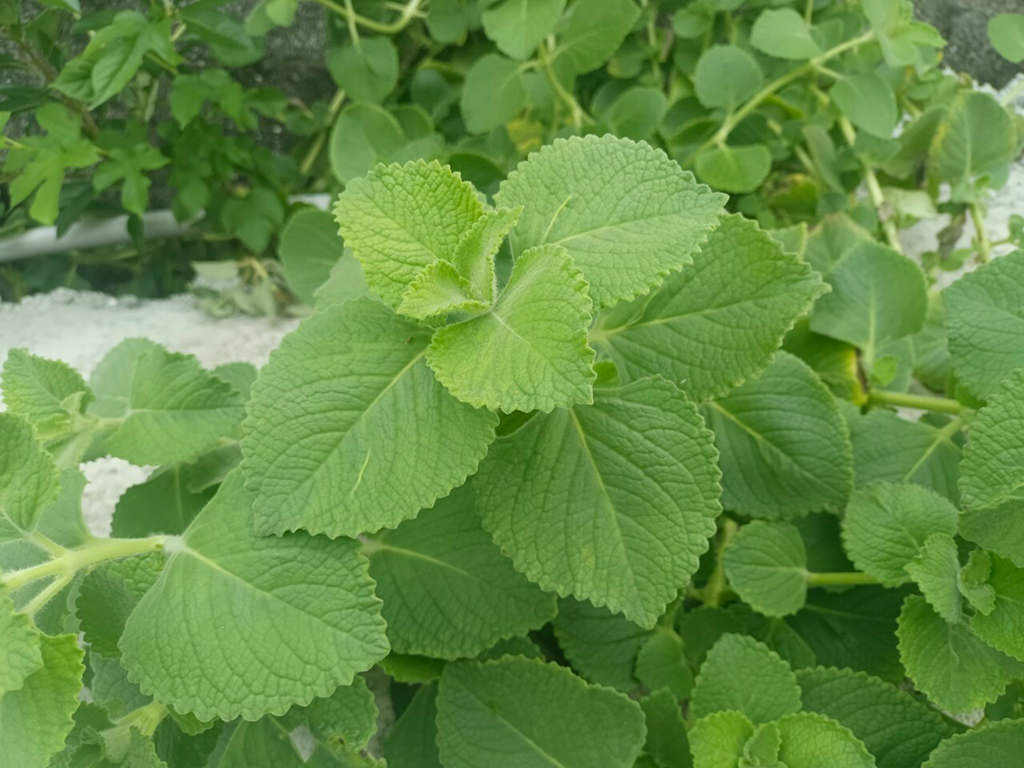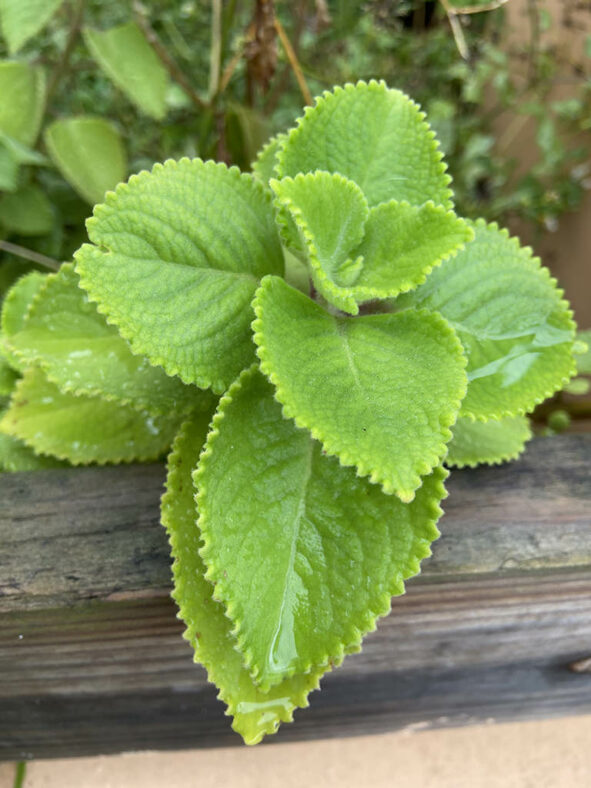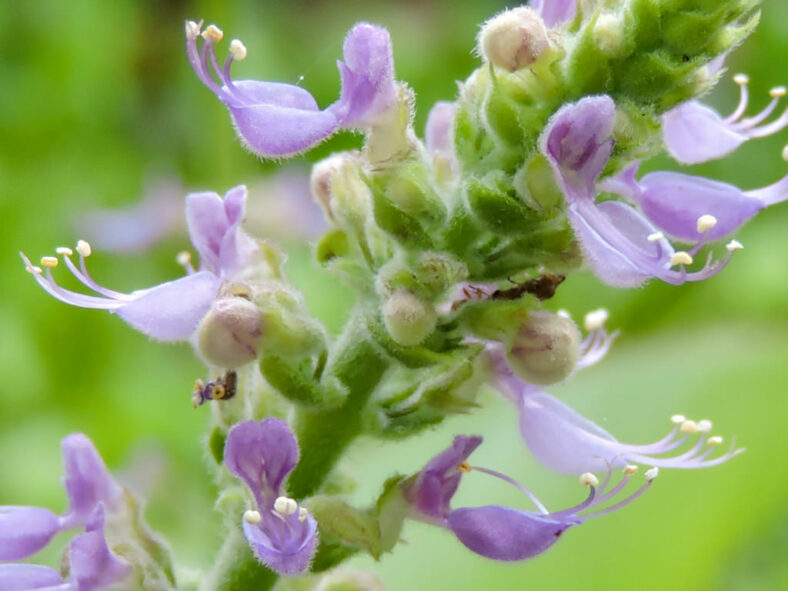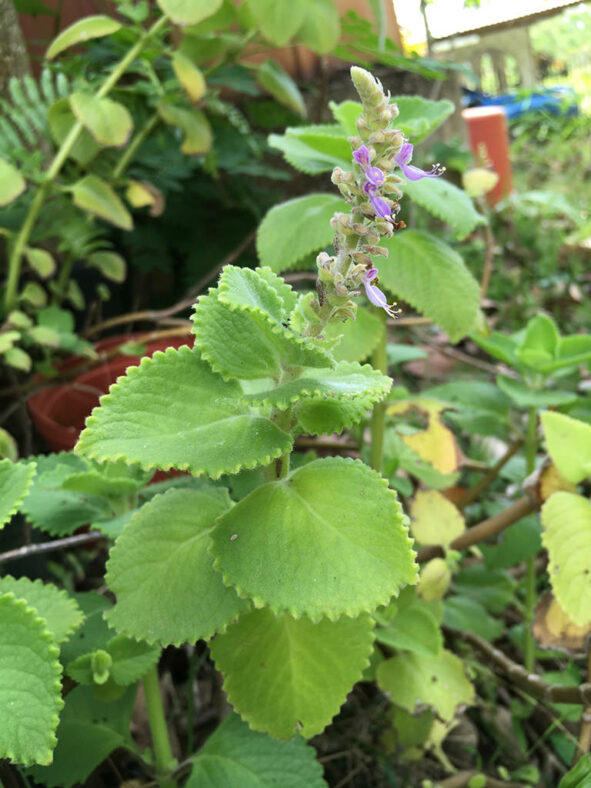Coleus amboinicus, also known as Cuban Oregano, is a perennial herb with strongly flavored leaves that are often used as a substitute for oregano. It is also grown as an ornamental plant.
Scientific Name
Coleus amboinicus Lour.
Common Name(s)
Caribbean Oregano, Country Borage, Cuban Oregano, French Thyme, Indian Borage, Indian Mint, Mexican Mint, Soup Mint, Spanish Thyme
Synonym(s)
Majana amboinica, Plectranthus amboinicus
Scientific Classification
Family: Lamiaceae
Subfamily: Nepetoideae
Tribe: Ocimeae
Subtribe: Plectranthinae
Genus: Coleus
Etymology
The specific epithet "amboinicus (am-boy-IN-ih-kuss) means "belonging to or derived from Ambon" and refers to Ambon Island, part of the Maluku Islands of Indonesia, where the species was apparently encountered.
Origin
Coleus amboinicus is native to Africa. It grows at low altitudes in woodland or coastal bush, on rocky slopes and loamy or sandy flats from Kenya southwards to Angola in the west and, in the east, to Mozambique, Eswatini (formerly Swaziland), and the northern KwaZulu-Natal province of South Africa.
Description
Coleus amboinicus, formerly known as Plectranthus amboinicus, is a succulent plant with many decumbent stems that bear fleshy, green, and highly aromatic leaves. The stems are fleshy, cylindrical to somewhat 4-angled, and can grow up to 5 feet (1.5 m) long and 0.3 inches (0.7 cm) in diameter. They are green when young and turn brownish as they age. The leaves are densely hairy, broadly ovate to ovate-deltoid with finely scalloped margins, and measure up to 1.8 inches (4.5 cm) long and 1.6 inches (4 cm) broad. They are attached to the stem by a petiole up to 0.4 inches (1 cm) long.
From late summer to fall, Coleus amboinicus produces flowers that can be lilac, mauve, or whitish. The flowers appear arranged in whorls of 4 to 10 along slender stalks that can grow up to 20 inches (50 cm) long. The fruits are smooth, pale brown nutlets.

How to Grow and Care for Coleus amboinicus
Light: Coleus amboinicus thrives in bright, indirect light. Choose a location that receives sun only for part of the day or a shady spot beneath a tree. Indoors, place the plant in a spot that gets direct light for most of the day.
Soil: The most important factor in growing this plant is ensuring it is planted in well-draining soil. Mix standard potting soil with perlite or sand to ensure adequate drainage.
Temperature: Coleus amboinicus thrives in subtropical and tropical locations. However, it can do well in cooler climates if grown in a pot and brought indoors during winter. It grows best in USDA Plant Hardiness Zones 9a to 11b, with average minimum winter temperatures ranging from 20 to 50 °F (-6.7 to 10 °C).
Watering: Regular watering is essential for this plant to thrive. Water only when the top inch (2.5 cm) of soil has dried out.
Fertilizing: Coleus amboinicus benefits from fertilization during the growing season, from spring to fall. A balanced liquid fertilizer is suitable for monthly use.
Repotting: You can use any pot with drainage holes to repot this plant. Ensure that the new pot is at least 2 inches (5 cm) larger in diameter than the old one.
Propagation: Coleus amboinicus is easy to propagate by division and stem cuttings. The best time to propagate is during the spring or early summer. You can also start it by sowing seeds indoors in the spring.
See more at How to Grow and Care for Plectranthus.
Toxicity of Coleus amboinicus
Coleus amboinicus is considered non-toxic to humans and pets, although the sap can cause minor skin irritation.
Links
- Back to genus Coleus
- Succupedia: Browse succulents by Scientific Name, Common Name, Genus, Family, USDA Hardiness Zone, Origin, or cacti by Genus
Photo Gallery
Click on a photo to see a larger version.



